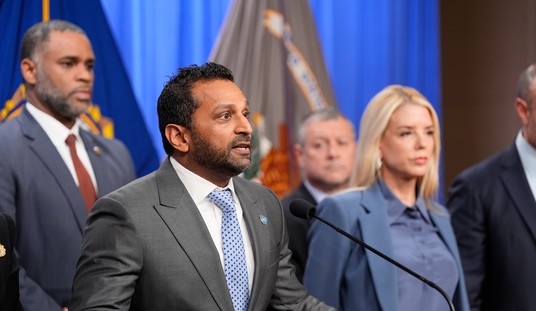If an unfriendly power had attempted to impose on America the mediocre educational performance that exists today, we might well have viewed it as an act of war.
-- "A Nation At Risk" (1983)
WASHINGTON -- Let us limp down memory lane to mark this week's melancholy 25th anniversary of a national commission's report that galvanized Americans to vow to do better. Today the nation still ignores what had been learned years before 1983.
Sen. Daniel Patrick Moynihan once puckishly said that data indicated that the leading determinant of the quality of public schools, measured by standardized tests, was the schools' proximity to Canada. He meant that the geographic correlation was stronger than the correlation between high test scores and high per pupil expenditures.
Moynihan also knew that schools cannot compensate for the disintegration of families, and hence communities -- the primary transmitters of social capital. No reform can enable schools to cope with the 36.9 percent of all children and 69.9 percent of black children today born out of wedlock, which means, among many other things, a continually renewed cohort of unruly adolescent males.
Chester Finn, a former Moynihan aide, notes in his splendid new memoir ("Troublemaker: A Personal History of School Reform Since Sputnik") that during the Depression-era job scarcity, high schools were used to keep students out of the job market, shunting many into nonacademic classes. By 1961, those classes had risen to 43 percent of all those taken by students. After 1962, when New York City signed the nation's first collective bargaining contract with teachers, teachers began changing from members of a respected profession into just another muscular faction fighting for more government money. Between 1975 and 1980 there were a thousand strikes involving a million teachers whose salaries rose as students' scores on standardized tests declined.
Recommended
In 1964, SAT scores among college-bound students peaked. In 1965, the Elementary and Secondary Education Act (ESEA) codified confidence in the correlation between financial inputs and cognitive outputs in education. But in 1966, the Coleman report, the result of the largest social science project in history, reached a conclusion so "seismic" -- Moynihan's description -- that the government almost refused to publish it.
Released quietly on the Fourth of July weekend, the report concluded that the qualities of the families from which children come to school matter much more than money as predictors of schools' effectiveness. The crucial common denominator of problems of race and class -- fractured families -- would have to be faced.
But it wasn't. Instead, shopworn panaceas -- larger teacher salaries, smaller class sizes -- were pursued as colleges were reduced to offering remediation to freshmen.
In 1976, for the first time in its 119-year history, the National Education Association, the teachers union, endorsed a presidential candidate, Jimmy Carter, who repaid it by creating the Education Department, a monument to the premise that money and government programs matter most. At the NEA's behest, the nation has expanded the number of teachers much faster than the number of students has grown. Hiring more, rather than more competent, teachers meant more dues-paying union members. For decades, schools have been treated as laboratories for various equity experiments. Fads incubated in education schools gave us "open" classrooms, teachers as "facilitators of learning" rather than transmitters of knowledge, abandonment of a literary canon in the name of "multiculturalism," and so on, producing a majority of high school juniors who could not locate the Civil War in the proper half-century.
In 1994, Congress grandly decreed that by 2000 the high school graduation rate would be "at least" 90 percent and that American students would be "first in the world in mathematics and science achievement." Moynihan, likening such goals to Soviet grain quotas -- solemnly avowed, never fulfilled -- said: "That will not happen." It did not.
Moynihan was a neoconservative before neoconservatism became a doctrine of foreign policy hubris. Originally, it taught domestic policy humility. Moynihan, a social scientist, understood that social science tells us not what to do but what is not working, which today includes No Child Left Behind. Finn thinks NCLB got things backward: "The law should have set uniform standards and measures for the nation, then freed states, districts and schools to produce those results as they think best." Instead, it left standards up to the states, which have an incentive to dumb them down to make compliance easier.
A nation at risk? Now more than ever.

























Join the conversation as a VIP Member